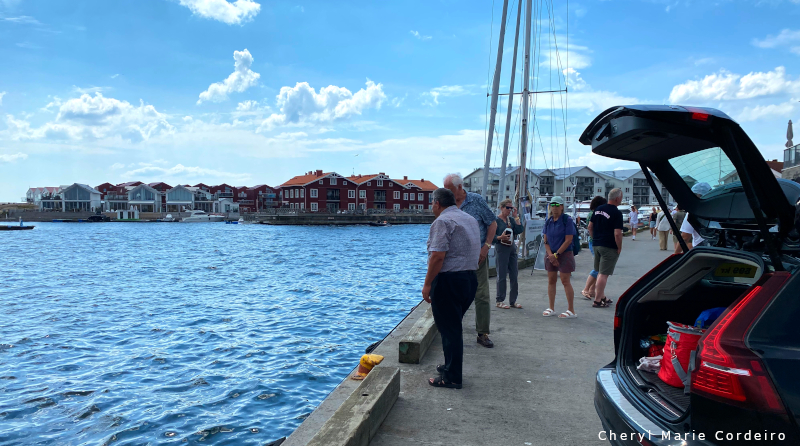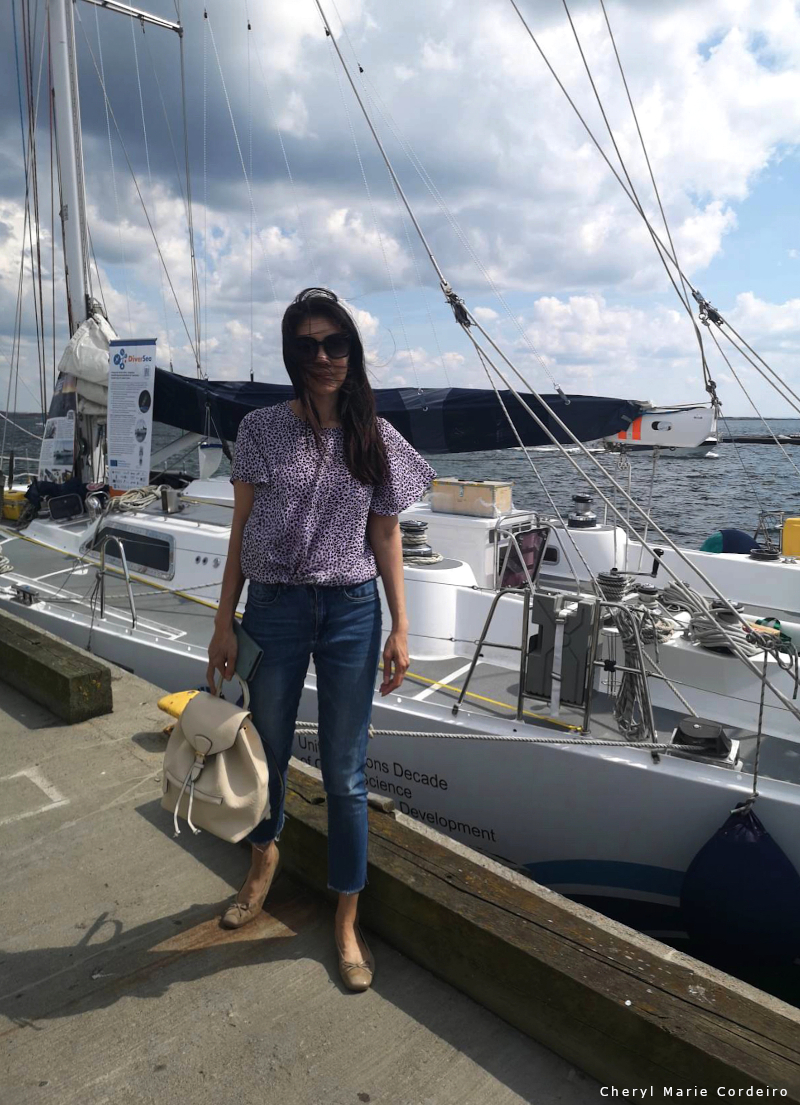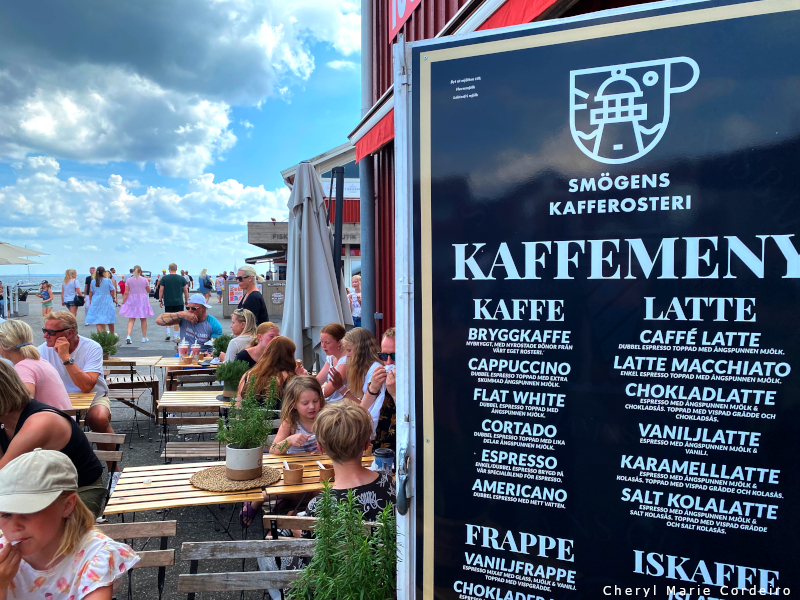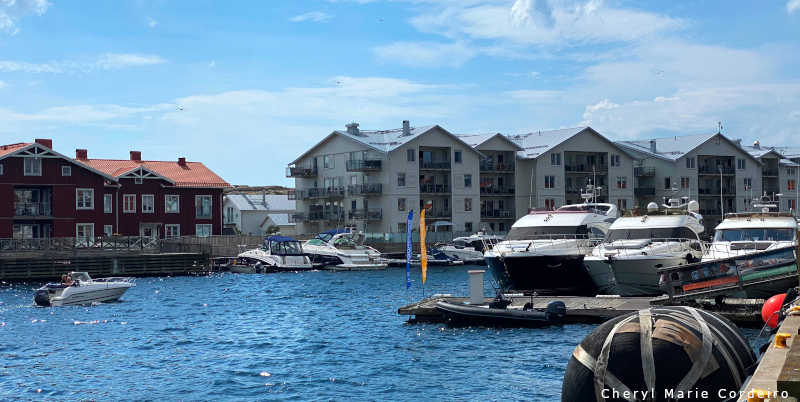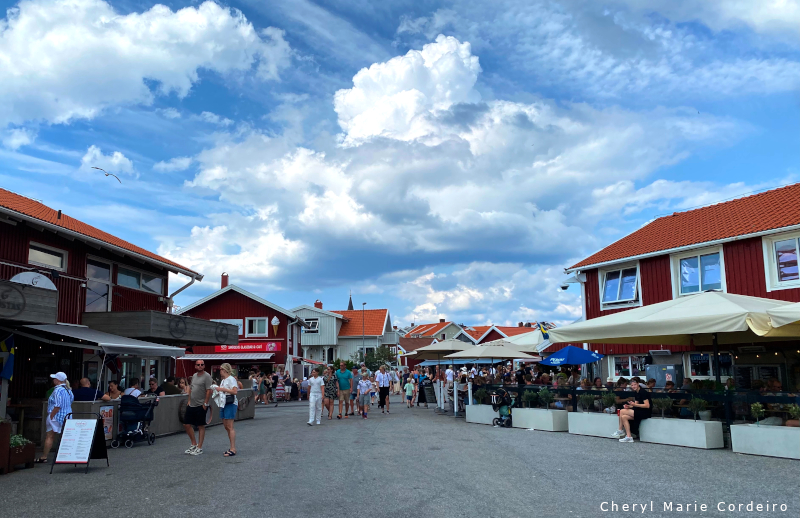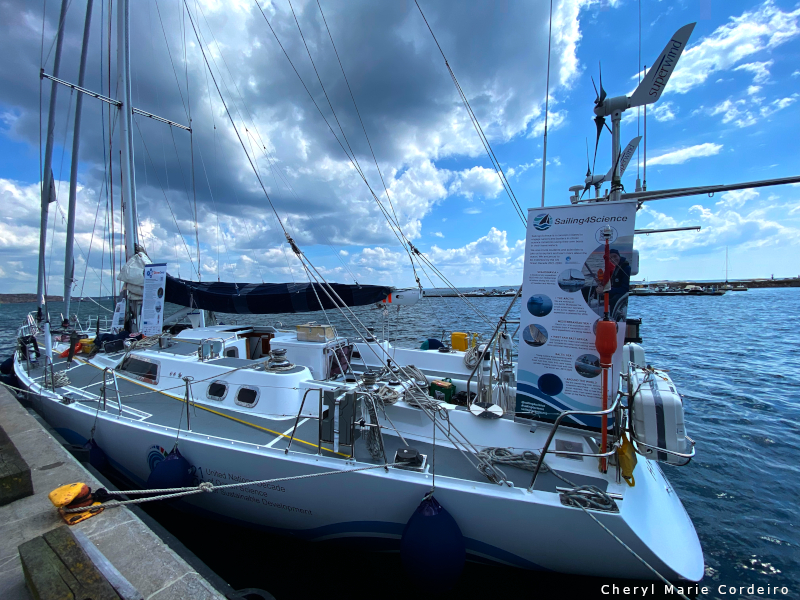
Photo & Text © 2025 JE Nilsson, CM Cordeiro
It’s a warm July afternoon. Low clouds drift lazily over the archipelago. Beneath them, the granite cliffs of Smögen rise from the sea, a sculpted memory in pink-grey that is sea-worn, and timeless. The town’s wooden boathouses, painted in reds and mellow yellows, lean against each other in an uneven row, anchored by the bustling boardwalk, parts of which snake along the harbor.
It’s here, outside a popular seafood restaurant called Göstas Fiskekrog, that a steel-hulled yacht appears to have sailed out of another chapter entirely.
Her name is S/Y Hrimfare, and unlike the sleek leisure boats that typically moor along Smögen’s pier, she’s not here for vacation. Hrimfare is a former around-the-world racing yacht, reborn as a floating research station, the flagship of an ambitious international project known as Sailing4Science.
On this afternoon, she’s docked not for resupply or retreat, but for conversation.
A Vessel with a New Mission
Built in 1991 for the BT Global Challenge, a grueling race against prevailing wind and current, Hrimfare once circumnavigated the globe three times. Today, she is retrofitted with solar panels, hydro-generators, and a full suite of oceanographic instruments: CTD sensors, atmospheric samplers, underwater acoustics, and mobile wet labs. She sails not in search of speed, but of answers.
As part of the UN Decade of Ocean Science for Sustainable Development (2021–2030), the Sailing4Science initiative aims to bring ocean monitoring and public engagement directly to coastal communities, marinas, ports, and even islands with limited scientific infrastructure.
This year’s voyage traces a northbound route from Copenhagen, through Sweden’s west coast including Smögen, toward the Norwegian fjords and Arctic waters beyond.
A Natural Laboratory in the Bohuslän Archipelago
Smögen may be a magnet for Swedish summer tourists, but it’s also a marine biologist’s dream. Nestled within the Gullmar Fjord–Skagerrak transition zone, the surrounding waters host a rich mosaic of ecosystems: eelgrass meadows, kelp forests, rocky reefs, and deep fjord basins.
According to researchers from the University of Gothenburg and the nearby Kristineberg Marine Research Station, this area offers one of the most ecologically and geochemically diverse marine environments in northern Europe. Species from both boreal and temperate zones coexist in a relatively small area, making Smögen a vital site for marine biodiversity monitoring.
Here, scientists study not just what lives in the water, but how it changes. Decades of research have recorded fluctuations in species composition, ocean chemistry, and the creeping impacts of warming, acidification, and human activity.
Smögen is now emerging as a key node in efforts to develop nature-based solutions, strategies that use ecosystems themselves to solve challenges like coastal erosion, water pollution, and carbon capture. Floating mussel farms, kelp cultivation experiments, and citizen-driven sampling projects are testing what sustainable coexistence with the sea might look like [1].
When the Public Becomes the Crew
That’s part of what brought Hrimfare here. In addition to supporting scientific missions, she serves as a public-facing research vessel, designed to host students, early-career scientists, policymakers, and even local residents interested in hands-on marine science.
Workshops held aboard cover topics such as:
- Blue food futures and regenerative aquaculture
- Electrification of coastal infrastructure
- Plastic pollution in Scandinavian waters
- Ocean literacy and climate resilience
In these sessions, crew members explain their tools and methods, including how water samples are collected, how temperature and salinity readings trace ocean currents, and how seabed mapping helps track habitat shifts.
It’s science by sail, but also science by invitation.
A Port of Convergence
Back in town, life carries on in rhythm with the sea. Fishing boats unload their catch, whilst ashore, visitors can find handcrafted jewelry and local fare. Tourists lean over piers with ice cream in hand. A child drops a crab trap into the shallows. The presence of Hrimfare doesn’t interrupt this; rather, it adds a layer to it.
It reminds us that places like Smögen are not only beautiful, but also consequential. They are where ocean change becomes visible, where science and society meet, and where old seafaring traditions now intersect with climate adaptation and marine innovation.
For the crew aboard Hrimfare, this is exactly the point. Science doesn’t need to be hidden in a lab or a remote station. Sometimes, it can sail into town, dock quietly beside a seafood restaurant, and invite anyone willing to step aboard in curious conversation.
References
[1] Haenel, Q., Holovachov, O., Jondelius, U., Sundberg, P., & Bourlat, S. (2017). NGS-based biodiversity and community structure analysis of meiofaunal eukaryotes in shell sand from Hållö island, Smögen, and soft mud from Gullmarn Fjord, Sweden. Biodiversity Data Journal, 5, e12731. https://doi.org/10.3897/BDJ.5.e12731
